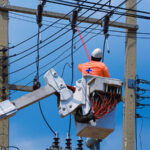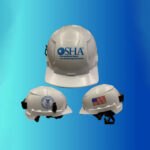Workplace safety is a top priority in any industry, and Personal Protective Equipment (PPE) plays a critical role in protecting employees from injuries and illnesses. From construction sites to healthcare facilities, PPE serves as the last line of defense against hazards. Understanding its importance and selecting the right gear for the job is essential for ensuring worker safety and compliance with regulations.
What is PPE?
Personal Protective Equipment includes clothing and gear designed to protect workers from various risks, such as physical, chemical, biological, and ergonomic hazards. Common types of PPE include:
- Head Protection: Hard hats, helmets.
- Eye and Face Protection: Safety goggles, face shields.
- Respiratory Protection: Masks, respirators.
- Hearing Protection: Earplugs, earmuffs.
- Hand Protection: Gloves for different tasks (e.g., chemical-resistant, cut-resistant).
- Foot Protection: Steel-toe boots, non-slip shoes.
- Body Protection: High-visibility vests, coveralls, aprons.
Why is PPE Important?
- Reduces Risk of Injury and Illness PPE minimizes exposure to workplace hazards that could cause injuries, such as cuts, burns, or chemical exposure, and health issues like hearing loss or respiratory problems.
- Ensures Compliance with Safety Regulations Regulatory bodies like OSHA (Occupational Safety and Health Administration) mandate the use of PPE in many industries. Compliance not only prevents legal penalties but also demonstrates a commitment to employee welfare.
- Enhances Employee Confidence Workers who feel protected are more confident and productive. Proper PPE fosters a safer environment where employees can focus on their tasks without undue worry about potential hazards.
Choosing the Right PPE for the Job
Selecting the correct PPE involves assessing workplace hazards and matching protective gear to the specific risks. Here’s how to ensure the right choice:
- Conduct a Hazard Assessment
- Identify potential risks in the workplace, such as chemical spills, falling objects, or loud machinery.
- Evaluate the severity and likelihood of each hazard.
- Involve Employees in the Selection Process
- Gather input from workers who will use the PPE to ensure it meets their needs and is comfortable.
- Test different options to determine the best fit and functionality.
- Choose PPE with the Appropriate Standards
- Look for certifications that indicate compliance with safety standards, such as ANSI, NIOSH, or EN.
- Ensure PPE is compatible with other safety equipment used on-site.
- Provide Proper Training
- Teach employees how to wear, use, and maintain PPE correctly.
- Emphasize the importance of regular inspections and replacements for damaged or worn-out equipment.



